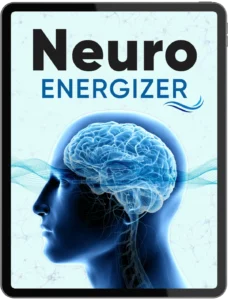Joint pain is one of the most common health challenges people face, especially as they get older. From the stiffness you feel in the morning to the aching knees after a long day, joint discomfort can impact every aspect of daily life. But while joint pain is widespread, it is not something you have to accept as inevitable. With the right knowledge about causes, prevention strategies, and long-term relief methods, you can protect your joints and maintain mobility for years to come.
In this comprehensive guide, we’ll explore everything you need to know about joint pain: why it happens, how to reduce your risk, and what you can do to achieve lasting relief.
What Is Joint Pain?
Joint pain refers to discomfort, aches, or soreness in any of the body’s joints. A joint is the place where two or more bones meet—like your knees, hips, shoulders, and elbows. Pain can range from mild irritation to severe chronic pain that limits movement. While occasional joint pain may come from overuse or minor injuries, chronic or persistent joint pain often points to underlying health conditions.
Common Causes of Joint Pain
Understanding what triggers joint pain is the first step toward managing it effectively. Here are the most common causes:
1. Osteoarthritis
The most frequent cause of joint pain, osteoarthritis happens when cartilage (the protective tissue at the ends of bones) wears down over time. This leads to stiffness, swelling, and pain, especially in weight-bearing joints like hips and knees.
2. Rheumatoid Arthritis
An autoimmune condition where the immune system attacks the joints, rheumatoid arthritis causes inflammation, swelling, and painful deformities. It can affect multiple joints simultaneously and often comes with fatigue.
3. Gout
This form of arthritis results from excess uric acid forming crystals in the joints, leading to sudden, severe pain, redness, and swelling—commonly in the big toe.
4. Bursitis
The bursae are fluid-filled sacs that cushion your joints. When they become inflamed, often due to repetitive motion, the result is joint pain and tenderness.
5. Tendinitis
Overuse of a joint can lead to tendinitis, which is inflammation of the tendons. It commonly affects shoulders, elbows, wrists, and heels.
6. Injuries
Sprains, strains, dislocations, or fractures can damage ligaments, cartilage, or bones, resulting in lingering joint pain.
7. Lifestyle Factors
Excess weight, lack of physical activity, poor posture, or improper exercise techniques can all contribute to increased pressure and stress on joints.
Symptoms That Shouldn’t Be Ignored
While occasional soreness may not be serious, persistent or severe symptoms require medical attention. Look out for:
- Swelling and redness around the joint
- Warmth in the joint area
- Severe pain or sudden inability to move
- Joint deformities
- Chronic stiffness lasting more than a few weeks
These may indicate an underlying condition that needs professional treatment.
Prevention: Protecting Your Joints Before Problems Begin
Joint pain isn’t always preventable, but lifestyle choices can significantly reduce your risk. Here’s how to keep your joints healthy:
Maintain a Healthy Weight
Every extra pound you carry adds stress to your knees, hips, and back. Losing even a small amount of weight can ease pressure and prevent cartilage wear.
Stay Active
Low-impact exercises like swimming, walking, cycling, and yoga keep joints flexible and strengthen the muscles around them, which helps protect against injury.
Strengthen Muscles
Resistance training builds muscle mass to stabilize and support joints. Stronger muscles absorb more impact, reducing strain on bones and cartilage.
Practice Good Posture
Sitting and standing correctly distributes weight evenly, reducing unnecessary stress on joints.
Eat a Joint-Friendly Diet
A diet rich in omega-3 fatty acids, antioxidants, calcium, and vitamin D can reduce inflammation and protect bone and cartilage health. Foods like salmon, walnuts, leafy greens, berries, and dairy are excellent options.
Avoid Repetitive Stress
Take breaks during repetitive tasks, and vary your movements to avoid wearing down the same joints over time.
Long-Term Relief: Strategies That Work
If you already struggle with joint pain, the good news is that many approaches can provide lasting relief. Here are evidence-backed strategies:
1. Physical Therapy
Therapists teach specific exercises that restore movement, strengthen supporting muscles, and reduce pain.
2. Medications
Over-the-counter pain relievers like ibuprofen and acetaminophen may help with mild discomfort. For chronic pain, doctors may prescribe stronger medications or injections.
3. Heat and Cold Therapy
Applying heat improves blood flow and relaxes stiff muscles, while cold packs reduce inflammation and swelling.
4. Supplements
Some supplements, such as glucosamine, chondroitin, turmeric, and omega-3s, may support joint health and reduce inflammation.
5. Lifestyle Adjustments
Incorporating stretching, stress management, and better sleep habits can reduce flare-ups and improve overall joint comfort.
6. Advanced Treatments
For severe cases, treatments like corticosteroid injections, hyaluronic acid injections, or even joint replacement surgery may be necessary.
Natural Approaches to Ease Joint Pain
For those looking for holistic options, many natural remedies have shown promise:
- Turmeric and ginger: Known for their anti-inflammatory properties.
- Green tea: Rich in antioxidants that may protect cartilage.
- Massage therapy: Helps increase circulation and reduce stiffness.
- Acupuncture: Traditional therapy that some people find helpful for chronic pain.
When to See a Doctor
If joint pain is severe, comes on suddenly, or is accompanied by unexplained weight loss, fever, or night sweats, you should consult a healthcare professional immediately. Early intervention can prevent long-term damage and improve quality of life.
Final Thoughts
Joint pain may be common, but it doesn’t have to control your life. By understanding the causes, taking preventive steps, and exploring both medical and natural relief strategies, you can keep your joints strong and mobile for decades to come. Whether you’re in your 30s hoping to stay active or in your 70s seeking long-term comfort, it’s never too early—or too late—to prioritize joint health.
Healthy joints are the foundation of a healthy, active life. Take action today, and give your body the care it deserves.





